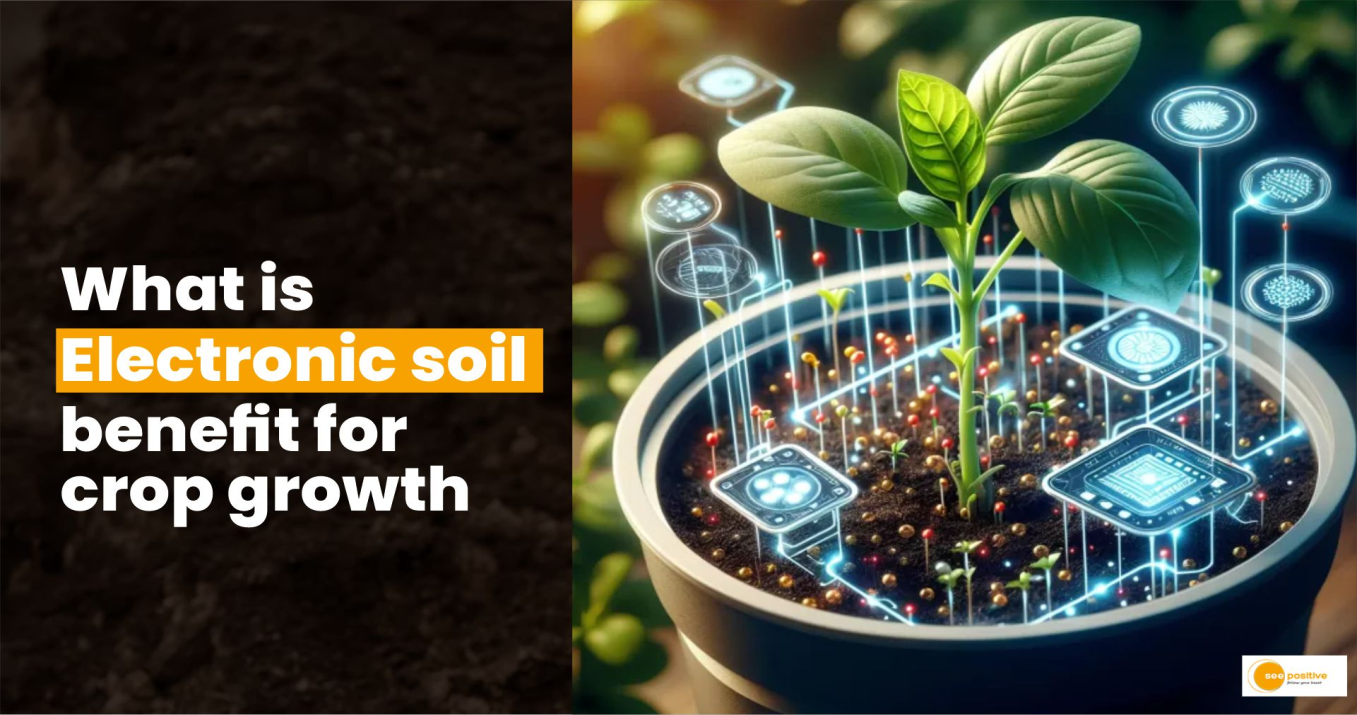Description

Copyright infringement not intended
Picture Courtesy: seepositive.in
Context: The development of an "electronic soil" (eSoil) by researchers has demonstrated significant potential in enhancing crop growth, particularly in the context of hydroponic cultivation methods.
Key points from the research
Enhanced Growth with eSoi
- The eSoil, developed by the Electronic Plants group at Linköping University, stimulated root systems and led to a 50% increase in the growth of barley seedlings.
Nature of eSoil
- It's tailored for hydroponic cultivation, a method of growing plants without soil using a water-based nutrient solution.
- Unlike non-biodegradable mineral wools often used in hydroponics, eSoil is composed of cellulose mixed with a conductive polymer called PEDOT. This combination is novel for plant cultivation.
Impact on Growth
- The study showed that the electrical stimulation via eSoil promotes better growth rates in barley seedlings cultivated through hydroponics.
- It's observed that seedlings process nitrogen more effectively, but the precise biological mechanisms influenced by electrical stimulation are yet to be fully understood.
Potential Benefits
- The researchers suggest that while eSoil might not solely solve global food security issues, it could be beneficial in areas with limited arable land and challenging environmental conditions. The method's controlled settings might facilitate food growth in urban environments.
- The potential to grow seedlings faster and with fewer resources through eSoil indicates promising possibilities for addressing agricultural challenges in resource-scarce environments.

What is electronic soil?
- Electronic soil, or eSoil, is a novel cultivation substrate that can enhance the growth of plants by electrically stimulating their root systems.
- It is designed for soilless farming, also known as hydroponics, which uses water and nutrients instead of soil to grow crops.
- eSoil is made of cellulose and a conductive polymer called PEDOT, which are both biodegradable and environmentally friendly materials.
Features of electronic soil
- It uses low energy and minimises resource consumption. It only requires a small voltage to activate the electrical stimulation, which can be powered by renewable sources such as solar panels or batteries.
- It is compatible with various crops, including grains, which are usually not grown hydroponically. It can also be used for vertical farming, which maximises the use of space and reduces land use.
- It is safe and effective. It does not harm the plants or the environment and it can boost the growth rate of plants by up to 50% in 15 days.
Significance of electronic soil
eSoil has many potential benefits for the world, especially in the face of growing challenges such as population growth, climate change, food insecurity, and environmental degradation. Some of them are:
- It can increase food production and quality.
- It can produce more crops in less time and space, with less water and nutrients.
- It can improve the nutritional value and taste of the crops.
- It can reduce environmental impact and pollution.
- It can save water and prevent nutrient leaching, which can contaminate groundwater and cause eutrophication.
- It can reduce greenhouse gas emissions and soil erosion, which are associated with conventional farming.
- It can promote urban agriculture and food security.
- It can enable people to grow their food in urban areas, where land is scarce and expensive.
- It can provide fresh and local food to consumers, reducing transportation costs and carbon footprint.

Conclusion
- The development of eSoil represents a promising step towards improving crop cultivation methods, particularly in environments where traditional agriculture might be limited. It presents an opportunity to optimize growth and resource utilization, offering potential benefits for future agricultural practices.
|
PRACTICE QUESTION
Q. What are the key advancements and applications of electronic soil monitoring technologies, and how do they contribute to sustainable agriculture and environmental management?
|












